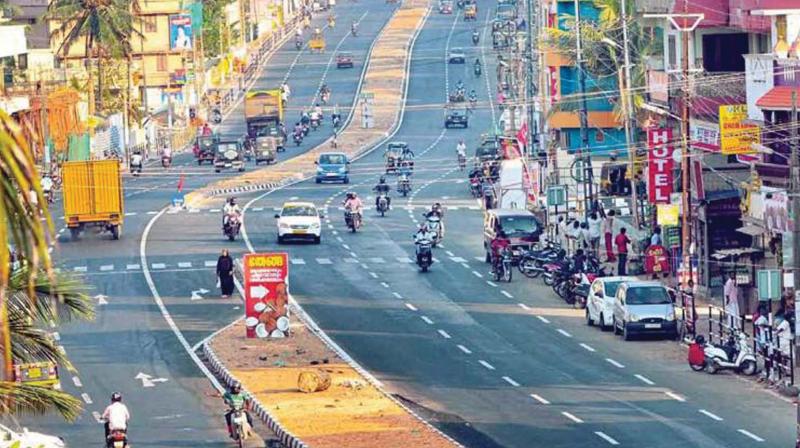From Murals to Citizens: A take on model' corridors
Public space becomes women-friendly only when they can use it without fear or inhibition.

What does it mean to have a model corridor, which is woman- friendly in Thiruvananthapuram city? A newspaper clipping cites a proposal for surveillance cameras, toilets, street furniture and arteria like intervention along an identified corridor that spans between Government Women’s College and Cotton Hill School. I have my office, friends’ office, grocery, petrol pump, teashop, doctor, market, restaurant everything that’s quintessential for urban living lined up along this stretch. Most of the days I witness this stretch change from 10 to 10. If I happen to go for a late night film with friends or stay back at my office to finish work, I see this stretch stay alive later into the night. Apart from the police vehicles that survey this space occasionally, the presence of the fish market and road side eateries at Vazhuthacaud junction act as elements of passive surveillance. Any public space becomes woman-friendly when women are able to use it without fear or inhibition, day or night. These spaces should give opportunities for uninterrupted shopping, entertainment, walking, loitering and expressing.
As Shilpa Phadke in “Why Loitre?” states “We believe that it is only by claiming the right to risk that women can truly claim citizenship. To do this we need to redefine our understanding of violence in relation to public space--to see not sexual assault, but the denial of access to public space as the worst possible outcome for women”. Exclusionary nature of public spaces does not encourage empowerment; it is food for stratification feeding into gender politics. Empowerment should come with responsibility- responsibility of the powerful towards empowering the powerless and responsibility of the empowered to assert their rights. For any street to be inclusive, it should include not only women, but also men and people who belong outside this narrow definition of gender. The beauty of such streets is not then measured by the pretty walls painted by world renowned artists, but about carefully planned spaces that are meaningful, accessible and used by every citizen of this city 24 hours in a day.
Our street and city designers have enough to learn from American journalist and urban activist Jane Jacobs, who in “Death and Life of Great American Cities” mentions the value of mixed use developments that stimulate street traffic leading to 'eyes on street'. Unfortunately, in our context, past 8 PM, ‘eyes on street’ is a morally motivated one, often judgemental of women and queer, who occupy public spaces. There are constant negotiations they make with the city everyday manoeuvring through the traffic and hypocrisy of what is called a ‘citizen’s city’. How do we make our cities alive, 24X7? The city administration should participate in a dialogue with citizens to bring about such positive changes within the city. Primarily people should start using public spaces through day and night. Informal activities such as roadside vending, eateries, restaurants, play spaces and late-night shopping need to be encouraged.
Our street designs should change from being carriers of vehicle with interlocked paving on either ends to vital public spaces that are accessible to people and where healthy activities thrive. Our understanding of safety should go beyond the general cliche of streetlights and surveillance cameras. Simply, our public spaces should be gender neutral and accessible. We need to engage rightfully in the act of place making, which then becomes the aesthetics of our public space. We need to get out and occupy public spaces, move our bodies freely and safely through the space, bring our walking sticks and wheelchairs here, 24 x 7. This will require long term design interventions through the participation of citizens of this city.
(The author is an architect and urban planner based in Thiruvananthapuram)

